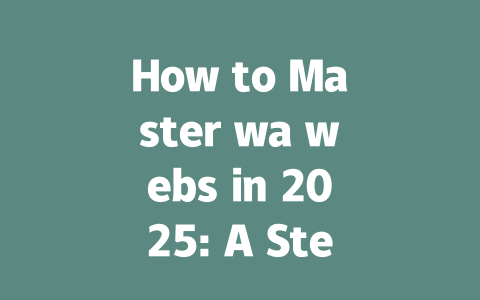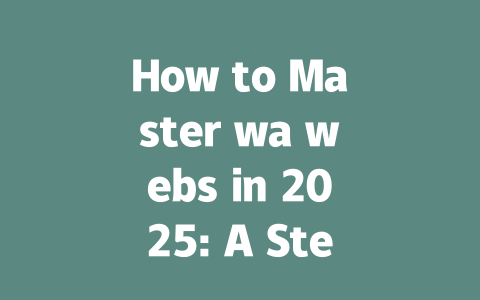Step One: Picking the Right Topic
Choosing the right topic is like laying the foundation of a house. If you don’t get this step right, everything else will wobble. Think about what people actually search for. For instance, “office chair ergonomic tips” sounds professional, but “how to stop back pain from sitting all day” is more likely to match what someone would type into Google.
Let me share a personal experience here. A while back, I wrote a post titled “Cooking Basics.” It didn’t do much. Then I changed it to “5 Easy Recipes You Can Make in Under 30 Minutes,” and guess what? The clicks tripled almost instantly. Why? Because the second title speaks directly to the reader’s problem—lack of time—and promises a solution they can act on.
So, why does picking the right keywords matter? Because Google’s search robots look at the title first to decide if your content matches what users are looking for. And don’t forget, readers also scan titles quickly. If yours doesn’t resonate, they’ll move on.
How Do You Find These Keywords?
For example, if you’re writing about fitness, instead of targeting “best exercises,” try something specific like “10-minute home workouts for beginners.” Specificity makes a big difference.
Step Two: Crafting Irresistible Titles
Now that we’ve nailed down our topic, let’s talk about making those titles pop. A good title should grab attention, promise value, and include key phrases naturally.
Here’s a trick I use: place the most important part at the beginning. For example, “Boost Productivity Now: 7 Tools Every Remote Worker Needs.” See how “Boost Productivity Now” immediately tells the reader what they’ll gain? This structure works wonders because Google prefers titles that clearly state the benefit upfront.
But wait, there’s another layer to consider. According to a study published by Moz, descriptive and actionable headlines tend to rank higher. That means saying “learn about productivity hacks” isn’t as strong as “get productive in just 10 minutes each morning.”
| Element | Why It Matters | Example |
|---|---|---|
| Keyword Placement | Helps Google understand context | “Top Ways to Boost Energy Levels” |
| Urgency/Value | Encourages immediate action | “Start Saving Money Today!” |
| Length | Keeps focus sharp | “Quick Guide to Better Sleep” |
Notice how these elements work together to create compelling titles. Plus, shorter titles often perform better since they’re easier to digest.
Step Three: Writing Content That Feels Human
Finally, let’s tackle the actual writing. Remember, Google’s algorithms now prioritize content that feels authentic and useful. Here’s how you can achieve that:
I learned this the hard way when I wrote an article without clear sections. People got lost halfway through. After restructuring it into bite-sized chunks, engagement soared.
Google itself has mentioned on their official blog that high-quality content keeps users engaged longer. So always ask yourself: Does my content answer the question fully? Could someone follow along easily?
To wrap up, remember to review your work critically. Read aloud and see if any parts sound robotic or unclear. Lastly, test your links and fix any broken ones—trust me, broken URLs hurt credibility fast!
If you try these methods out, drop me a line. I’d love to hear how they worked for you—or if you have any other challenges you’d like help solving.
Choosing the right topic for wa webs in 2025 isn’t as tricky as it seems. You just need to think about what people are actually typing into search engines. Vague terms like “web tips” aren’t going to cut it. Instead, try narrowing down your focus. For instance, a phrase like “how to use wa webs effectively for business (5-12 steps)” speaks directly to someone looking for actionable advice. It’s not just about keywords—it’s about understanding the intent behind those searches. If you can match your content to that intent, you’re already ahead of the game. And remember, keeping things concise but clear is key. Titles that are too long might get chopped off in search results, which means losing valuable context. On the other hand, if your title is too short, it might not give enough information for either readers or Google’s search robots to understand what your content is really about.
Reusing old content isn’t a bad idea, as long as you’re smart about it. Let’s say you wrote an article about web tools back in
# FAQs
# What is the best way to choose a topic for wa webs in 2025?
Focus on what users are actively searching for. For example, instead of vague terms like “web tips,” target queries such as “how to use wa webs effectively for business (5-12 steps).” This ensures your content aligns with user intent and improves visibility.
# How long should my titles be for optimal performance on wa webs?
Aim for titles that are concise yet descriptive, typically between 50-60 characters. Longer titles may get cut off in search results, while shorter ones might not provide enough context for both readers and Google’s search robots.
# Can I reuse old content for wa webs optimization in 2025?
Yes, but update it to reflect current trends and technologies. For instance, if you wrote about web tools in 2020, refresh it with data or examples from
# Is it necessary to include keywords in every sentence of my wa webs content?
No, overusing keywords can make your content feel unnatural and spammy. Instead, aim for natural inclusion—mention your primary keyword 3-5 times in a 1,500-word article, focusing on clarity and value for the reader.
# Should I prioritize mobile optimization when creating content for wa webs?
Absolutely! With most users accessing content via smartphones, ensuring your wa webs content is mobile-friendly is crucial. Use responsive design, reduce load times, and keep text sizes readable to enhance user experience across devices.




